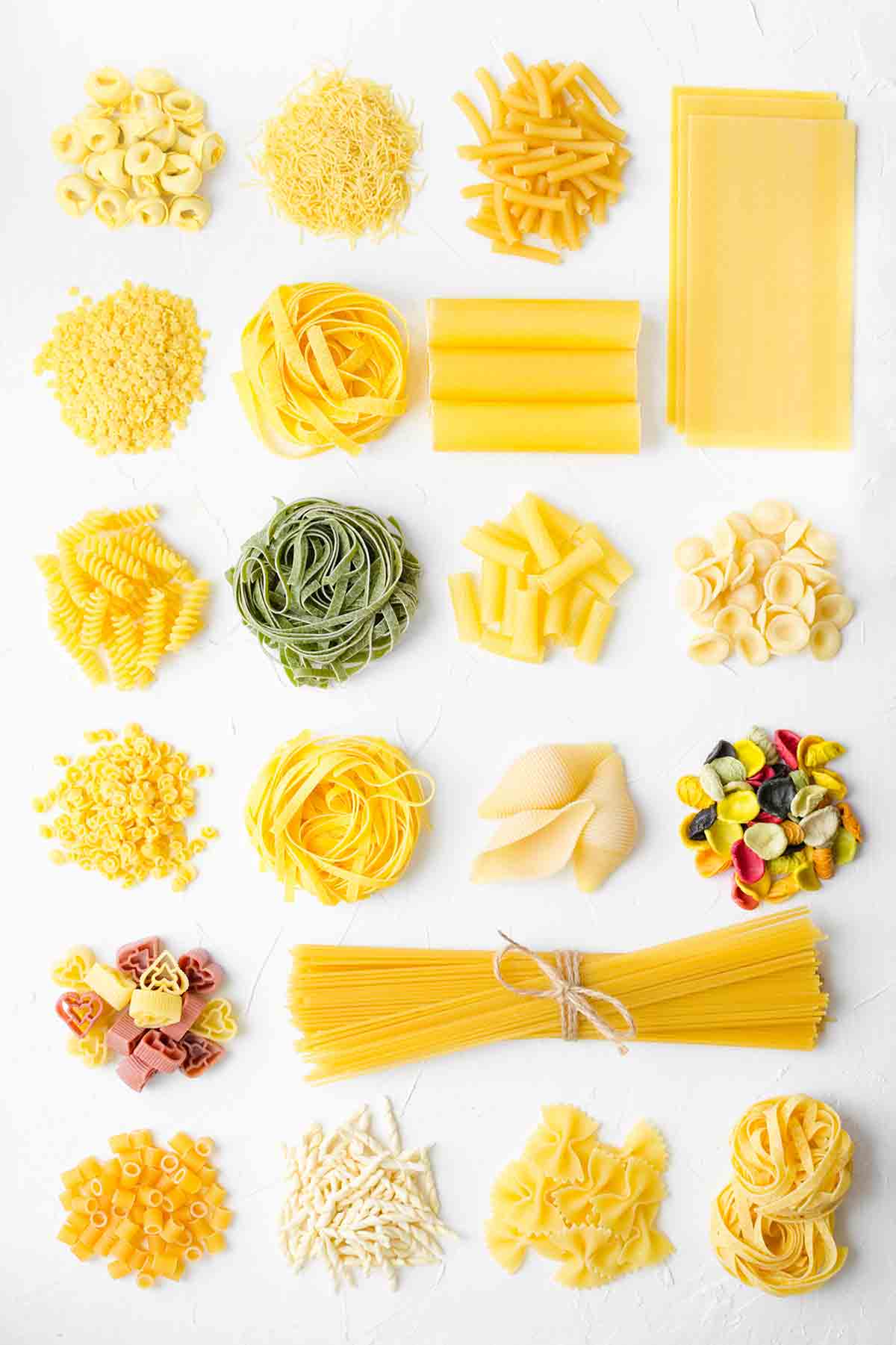
Although there are literally hundreds of shapes of pasta, all it takes is some savvy centuries-old knowledge and you’ll never again suffer through a bowl of overloaded angel hair or underwhelmed farfalle. All that traditional Italian wisdom can be distilled into one basic rule: Take into account the heaviness of the noodles compared to the weightiness of the sauce. You want the two to be balanced. Big, hearty noodles are made to stand up to big, hearty sauces, whereas thinner and more delicate noodles need to be tossed with lighter and more delicate sauces.
Long skinny strands
spaghetti, angel hair, capellini, and vermicelli
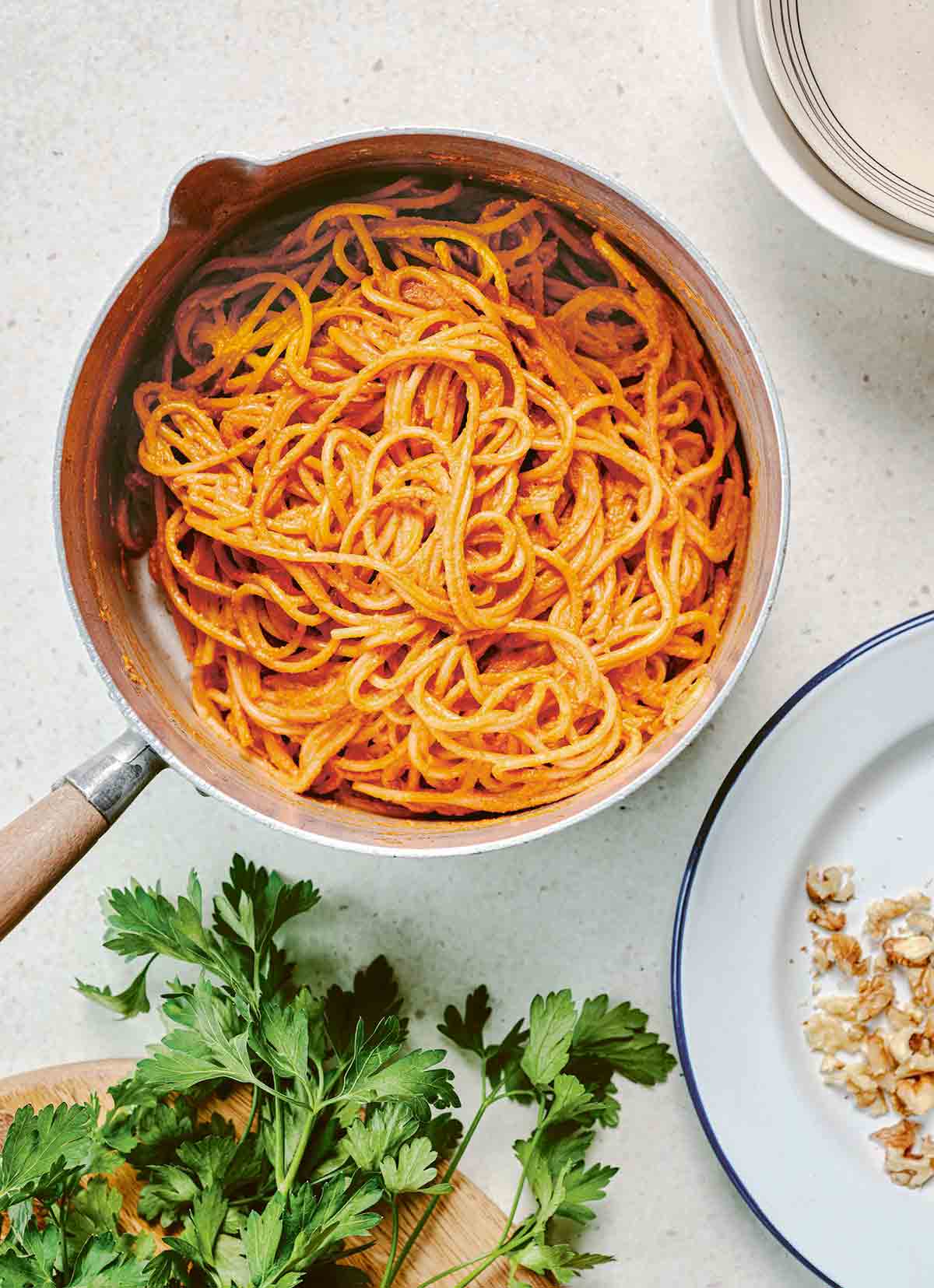
Slender strands easily pick up simple, barely there sauces. The sauce evenly coats the pasta and nothing gets weighed down or left on the plate when wound around a fork. A light tomato sauce makes use of these smooth-textured, skinny noodles to highlight the relative delicateness of the other ingredients. Lay off the beefy ragu with these shapes.
Best With:
- Any simple, tomato-forward sauce (it can also include seafood or perhaps even delicate turkey meatballs)
- Pantry-raid pasta nights (you know, simple sauces made by dumping chile flakes and garlic and a slick of oil into a pot of drained spaghetti and calling it done)

Sturdy long and flat noodles
fettuccine, linguine, and tagliatelle
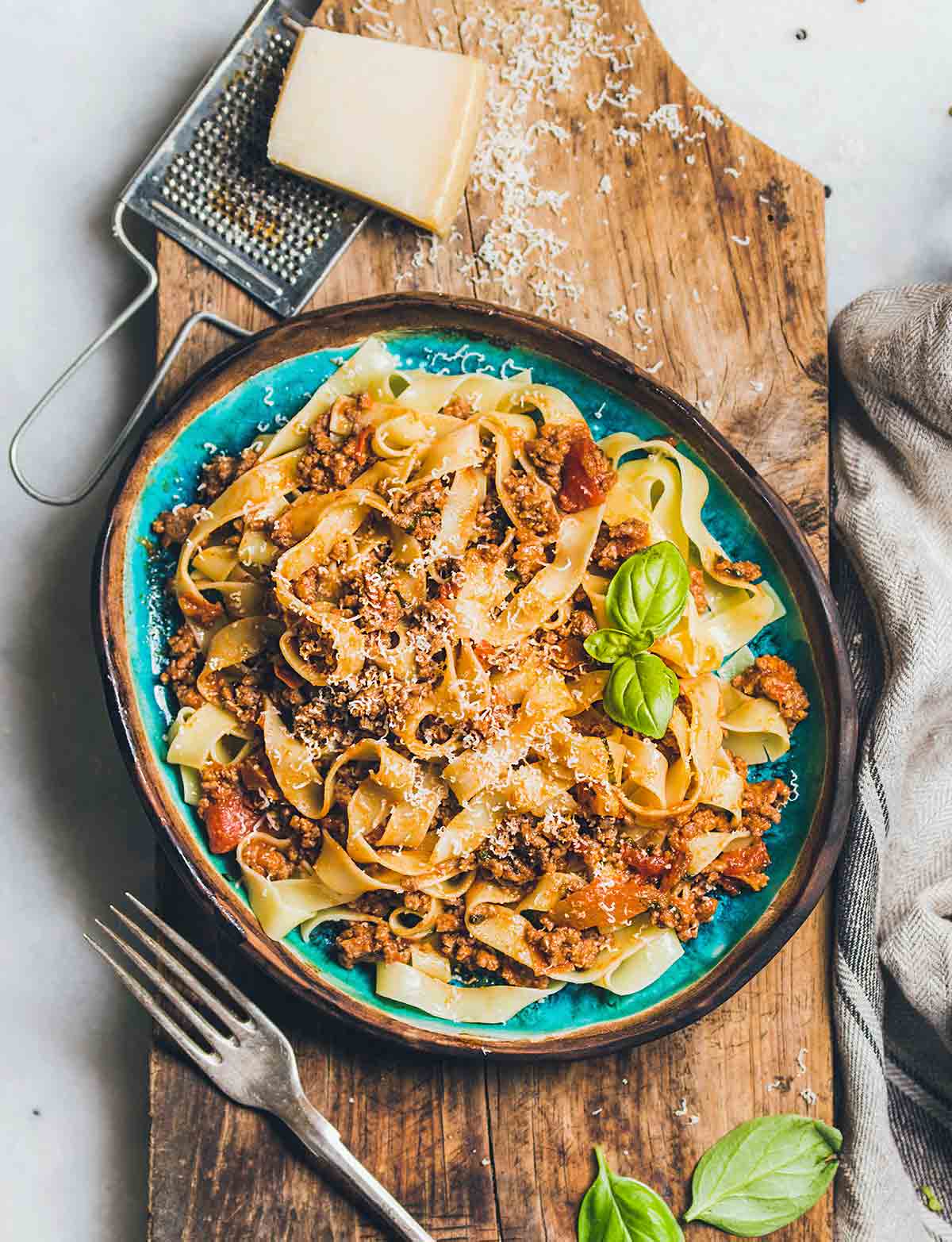
Longer-style noodles work spectacularly with a variety of rich, luxuriant sauces. More slender fettuccine and linguine are traditional for creamy alfredo sauce and hold up while carrying the sauce and adding texture. Tagliatelle is slightly wider, which makes it substantial enough to support a robust Bolognese. And those wavy, stocky egg noodles, which are essentially just short tagliatelle wannabes? They’re an ideal match for dishes with a similar substance and stature like stroganoff.
Best With:

Tube shapes
penne, bucatini, rigatoni, or tortiglioni
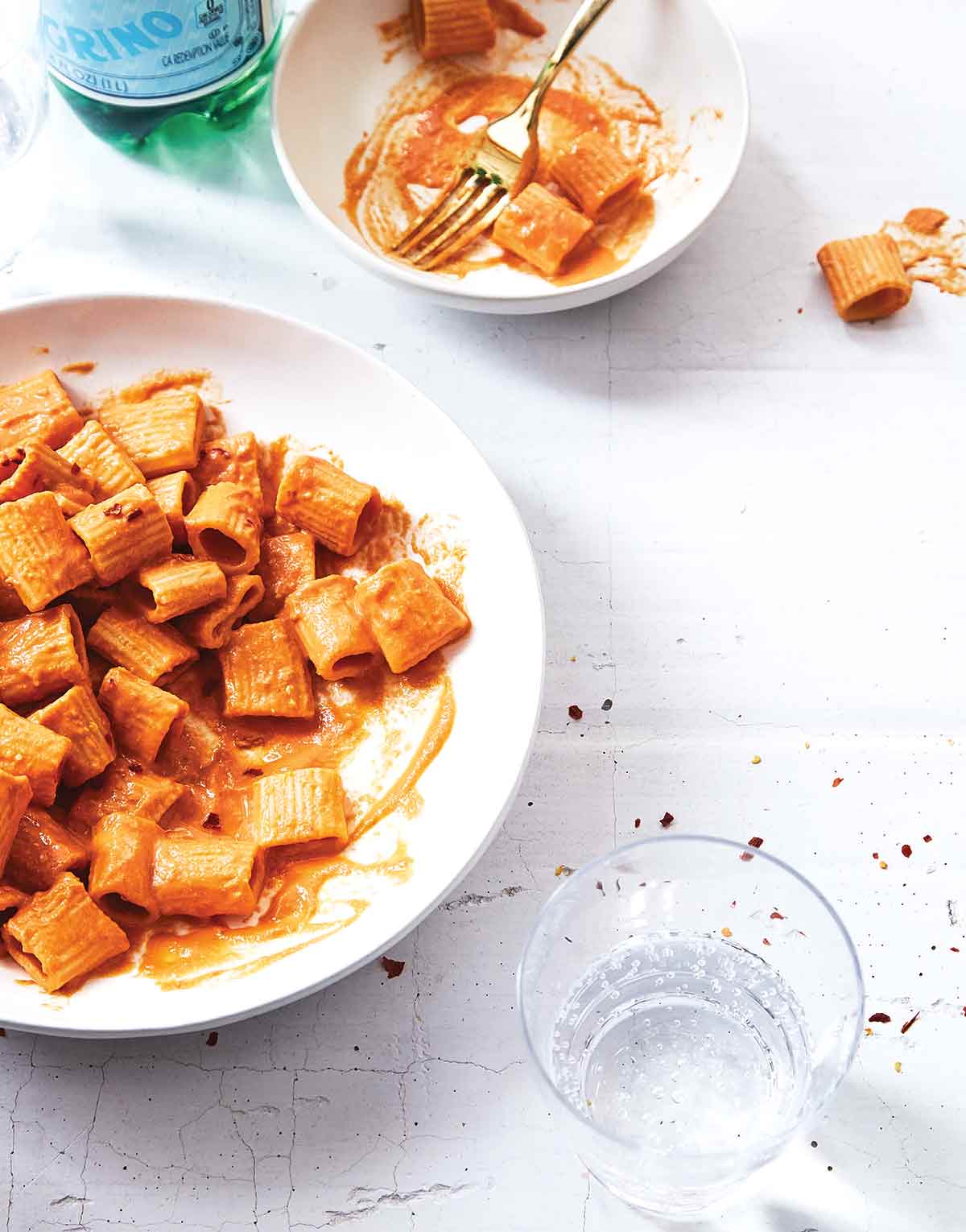
The short cut and hollow middles of tubes capture all the baked pasta deliciousness of sauces, small ingredients, and melty cheeses galore. Rich tomato sauces that are simmered to become concentrated in taste and texture call for a similarly bold and robust pasta. Thicker and ready to coat your pasta, these sauces weighed down by beef and big taste are easily picked up by tube-shaped pastas like bucatini, penne, or tortiglioni. A meaty and savory Sunday gravy can fill the tubes, working like a carb-delivery system.
Tube-shaped pastas are also incredibly versatile beyond a slow-cooked ragu. They’re also the foundation for pasta al forno, or baked pasta the Italian way, traditionally made with meat or cheese sauce and covered with cheese. Ziti, rigatoni, macaroni, and shells are all top choices here.
Best With:
- Slow-cooked ragu
- Hearty tomato sauces with vodka and cream or vegan alternatives
- Baked ziti
- Macaroni and cheese

Sauce-capturing shapes
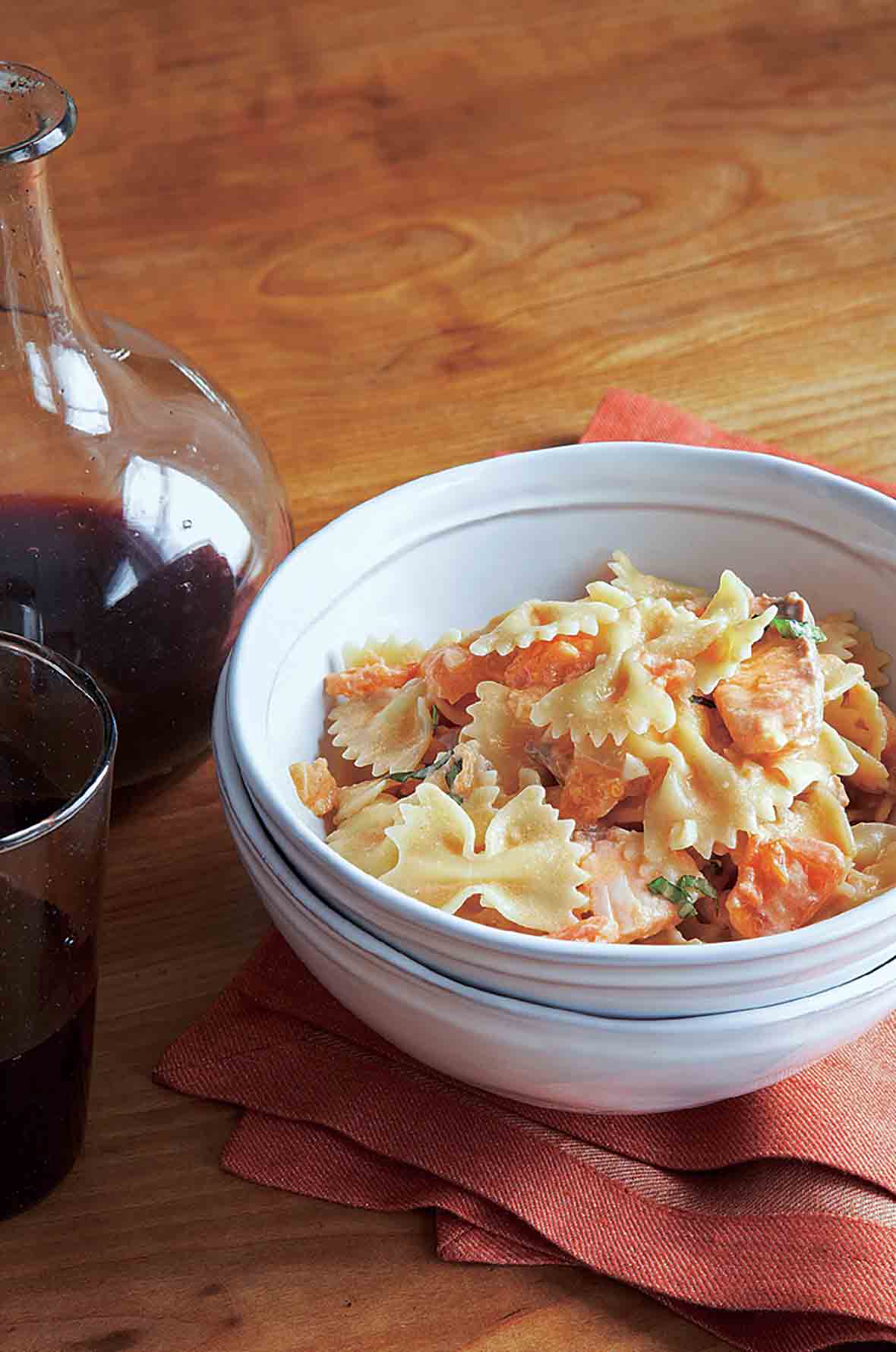
fusilli, farfalle, orecchiette
Sturdy pasta with sauce-hugging curves and ample hollows that can literally scoop up goodness are perfection for creamy, obscenely decadent sauces. The crevices fill up making a marvelous sauce-to-pasta ratio. Fusilli and farfalle are especially talented at this given their sauce-capturing surfaces that can hold up to any sort of goodness.
Want to save this?
Best With:
- Cream sauces (containing flaked seafood or other ingredients is perfectly fine)

Stuffed pastas
ravioli, tortellini, mezzelune, agnolotti

Stuffed pasta packages do well with simple oil- and butter-based sauces which coat the pasta but don’t compete with all the good stuff hiding inside the little parcel. Ravioli, tortellini, mezzelune, and agnolotti are all shapes that do well with little to no competition from a sauce.
Best With:
- A slick of brown butter
- Garlicky olive oil
- Pesto (this works only if the filling isn’t too flavorful; otherwise, you risk an overwhelming explosion of tastes and textures)

Gnocchi
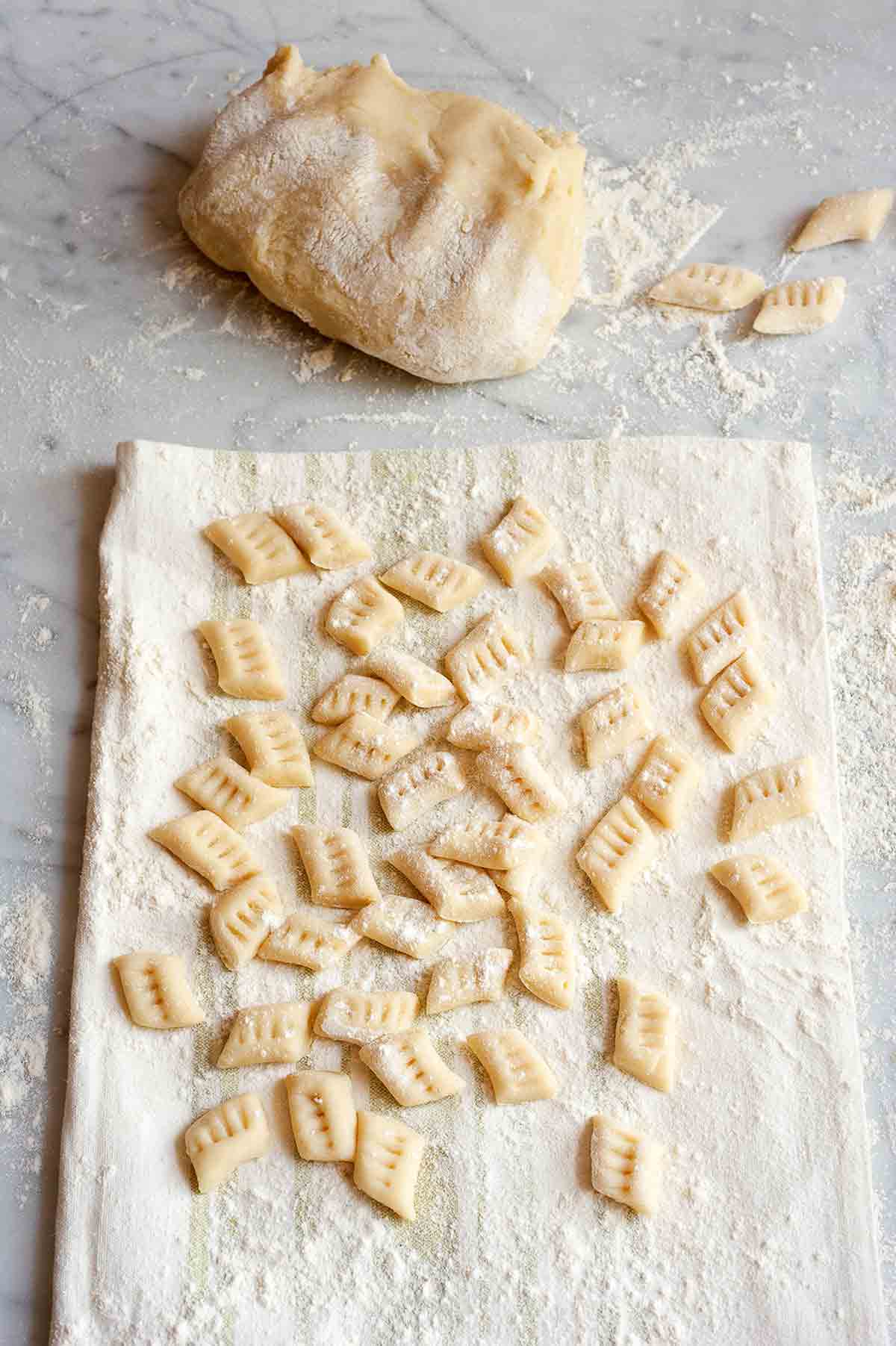
The light, velvety clouds covered in ridges known as gnocchi do well with a delicate sauce that clings and highlights their texture. Most commonly made with potatoes and flour, they’re boiled like pasta until puffy and pillowy. Especially delicious? Pan frying these little babies helps them stand up to heavier sauces.
Best With:
- Brown butter
- A meltingly smooth tomato sauce
- Pesto

Pastina
soup shapes such as orzo, ditalini, acini de pepe, and stelline

Cold-comfort foods like broth-based soups are so beloved that there’s a category of tiny pastas dedicated to it. The reason they’re so tiny is broth isn’t going to adhere to any sort of noodle. Yet a little pasta will still enhance the dish. Soup cuts like orzo, ditalini, acini di pepe, and stelline add texture and toothiness to your chicken soup with pasta and rice. They’re just too cute not to use! These small shapes also work exceptionally when warmed with milk and topped with a pat of butter for Italian-style comfort food.
Best With:
- Any soup recipe calling for pasta
- A little milk and butter

Other pasta shapes (and a caveat)
The variations of pasta and sauce combos are limitless (or at least beyond our counting skills). We’re not going to stop you if you want to load up your meaty ragu with the tiniest bowties you can get your hands on. Heck, some of us have been known to smash up lasagne sheets to serve as a rustic base for homemade pesto when that’s all we had in the pantry. And we’d do it again. If you have a pairing you love, keep it. And if you’re looking for sheer nostalgia and want our opinion, elbow noodles are perhaps best simply buttered or, natch, turned into macaroni and cheese.
A note about “bronze die” pasta shapes
When you’re at the store glancing at pasta packages, you may encounter the words “bronze die.” Bronze die pastas are, in general, higher-quality. The bronze extruders on the pasta machines help make the pasta surface rougher, which in turn helps the noodles to grab onto and absorb whatever sauce you choose to use, making them better than those smooth noodles on sale for just 79 cents a box.
@peterspastaJust open your mouth and you can catch the pasta ??









Great article I learned lots!
Thank you, Doug! There’s just so much pasta out there, I’m slowly working my way through them all.
Thank you, Jenny. This was so incredibly informative and practical! I now know for sure that I’ve been making pasta “mistakes” all my life. As a pasta lover – I’m now looking forward to combining the right pasta with the right sauce.
Thank you so much, Alan! I appreciate the feedback. I learned a lot writing this article, too. And I also learned why I love the pastas that I do—when it works, it works, right?